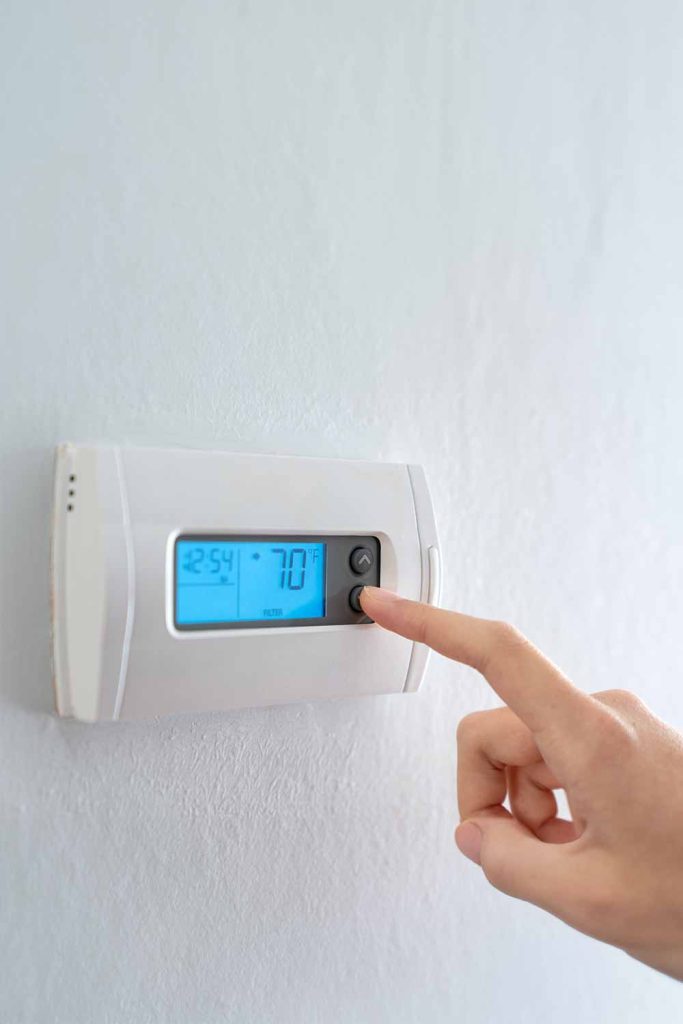What Should You Set Your Thermostat To During The Summer And Why!

Finding the perfect thermostat setting for summer can feel like a balancing act between comfort, energy efficiency, and cost. With rising temperatures, it’s essential to manage your home’s cooling system effectively.
This comprehensive guide will walk you through the ideal thermostat settings during the summer and explain why these settings can benefit you in multiple ways. From understanding how thermostats work to practical tips on energy conservation, we’ve got you covered.
Understanding How Your Thermostat Works
Before diving into the ideal summer settings, it’s important to understand how your thermostat works. Your thermostat is essentially a device that regulates your home’s temperature by controlling the heating and cooling systems.
Most modern thermostats are programmable, allowing you to set different temperatures for various times of the day, maximizing comfort and efficiency.
The Ideal Thermostat Setting: 78 Degrees Fahrenheit
According to the U.S. Department of Energy, the optimal thermostat setting for summer is 78 degrees Fahrenheit (26 degrees Celsius) when you are at home and awake. This setting strikes a balance between comfort and energy savings, ensuring your home remains cool without excessive energy use.
Adjusting the Temperature When You’re Away
When you’re away from home, it’s advisable to increase the thermostat setting. The Department of Energy recommends raising the temperature to about 85 degrees Fahrenheit (29 degrees Celsius). This higher setting helps reduce energy consumption while still protecting your home from excessive heat.
Benefits of Keeping Your Home at 78 Degrees
Setting your thermostat to 78 degrees provides several benefits:
- Energy Savings: Reduces your cooling costs by up to 10% for every degree you raise your thermostat over 72 degrees.
- Comfort: Maintains a pleasant indoor environment without feeling overly cool.
- Environmental Impact: Lower energy consumption reduces your carbon footprint.
Utilizing Programmable and Smart Thermostats
Programmable and smart thermostats can significantly enhance your home’s energy efficiency. These devices allow you to set schedules that automatically adjust the temperature based on your daily routines.
Smart thermostats can even learn your preferences over time and make adjustments accordingly, providing both convenience and cost savings.
Night-Time Temperature Adjustments
Night-time is another opportunity to optimize your thermostat settings. Consider setting your thermostat to a slightly lower temperature, around 72-74 degrees Fahrenheit (22-23 degrees Celsius). A cooler sleeping environment can improve sleep quality, making your rest more refreshing and comfortable.
Factors Influencing Ideal Thermostat Settings
Several factors can influence the best thermostat settings for your home:
- Humidity Levels: Higher humidity can make the air feel warmer. Dehumidifiers or air conditioners with built-in dehumidification can help manage humidity levels.
- Home Insulation: Well-insulated homes retain cool air longer, allowing for higher thermostat settings without sacrificing comfort.
- Sun Exposure: Homes with large windows or those facing direct sunlight may require lower thermostat settings to counteract the heat.
Tips for Enhancing Cooling Efficiency
Apart from adjusting your thermostat, several practices can enhance cooling efficiency:
- Ceiling Fans: Use ceiling fans to circulate air, making the room feel cooler.
- Close Blinds and Curtains: Block direct sunlight to keep indoor temperatures lower.
- Maintain Your HVAC System: Regular maintenance ensures your cooling system operates efficiently.
Long-Term Energy Savings Strategies
For long-term energy savings, consider these strategies:
- Insulate Your Home: Proper insulation reduces the need for excessive cooling.
- Upgrade to Energy-Efficient Appliances: Modern appliances use less energy and provide better cooling.
- Plant Shade Trees: Trees can provide natural cooling by blocking direct sunlight.
Setting your thermostat to the ideal temperature during the summer involves understanding how your thermostat works, considering your lifestyle, and implementing energy-saving practices.
By setting your thermostat to 78 degrees Fahrenheit when at home and adjusting it to higher temperatures when away, you can maintain comfort while optimizing energy use.
Utilizing programmable or smart thermostats, making night-time adjustments, and considering factors like humidity and insulation will further enhance your home’s efficiency.
Implementing these strategies not only ensures a comfortable living environment but also contributes to significant energy savings and a reduced environmental impact.

More interesting articles you may be interested in reading:

